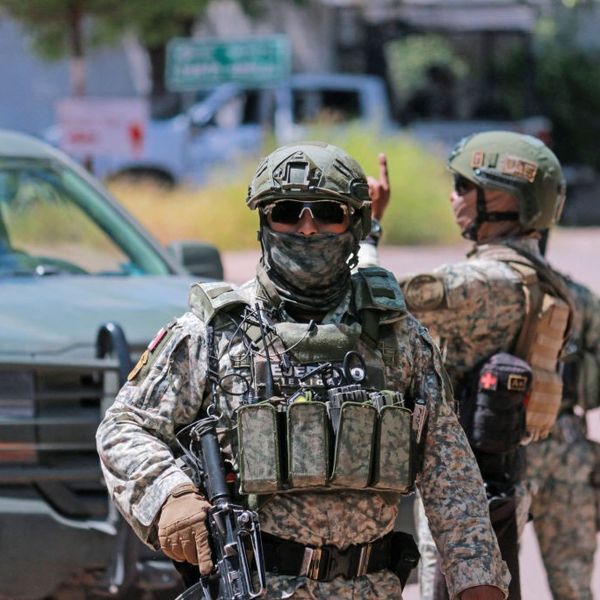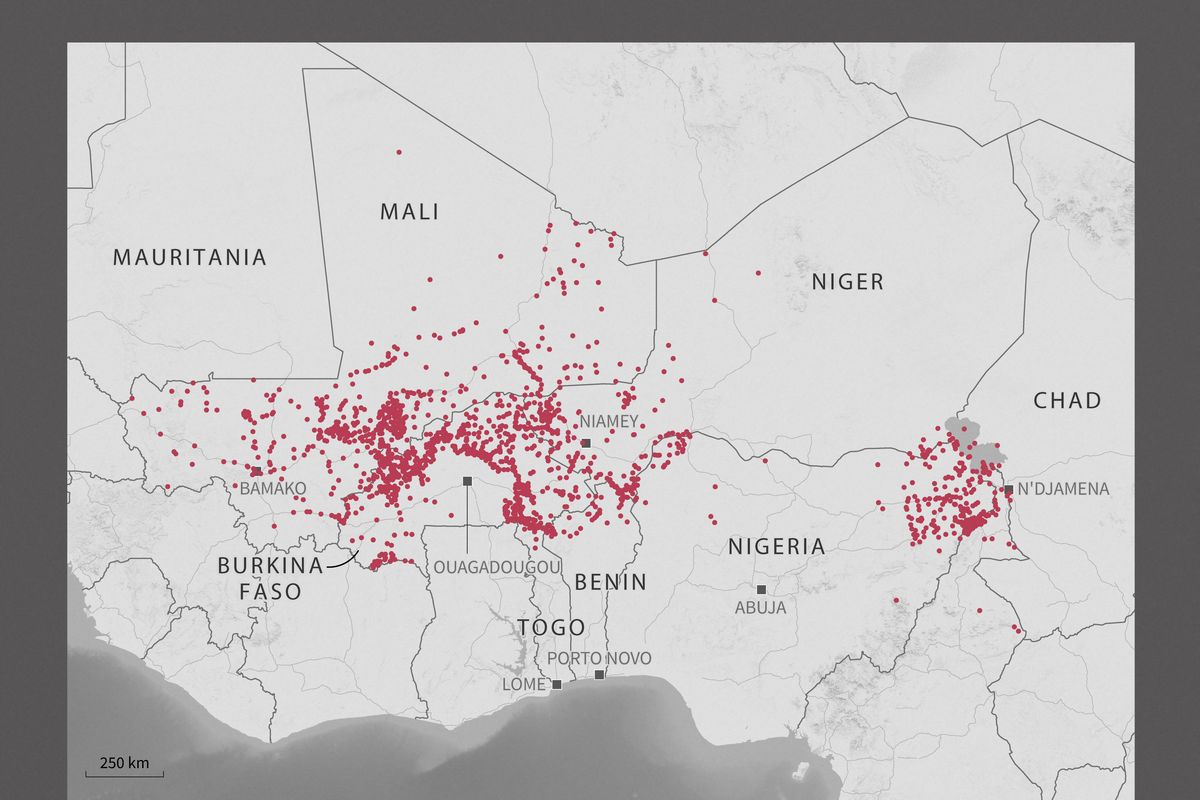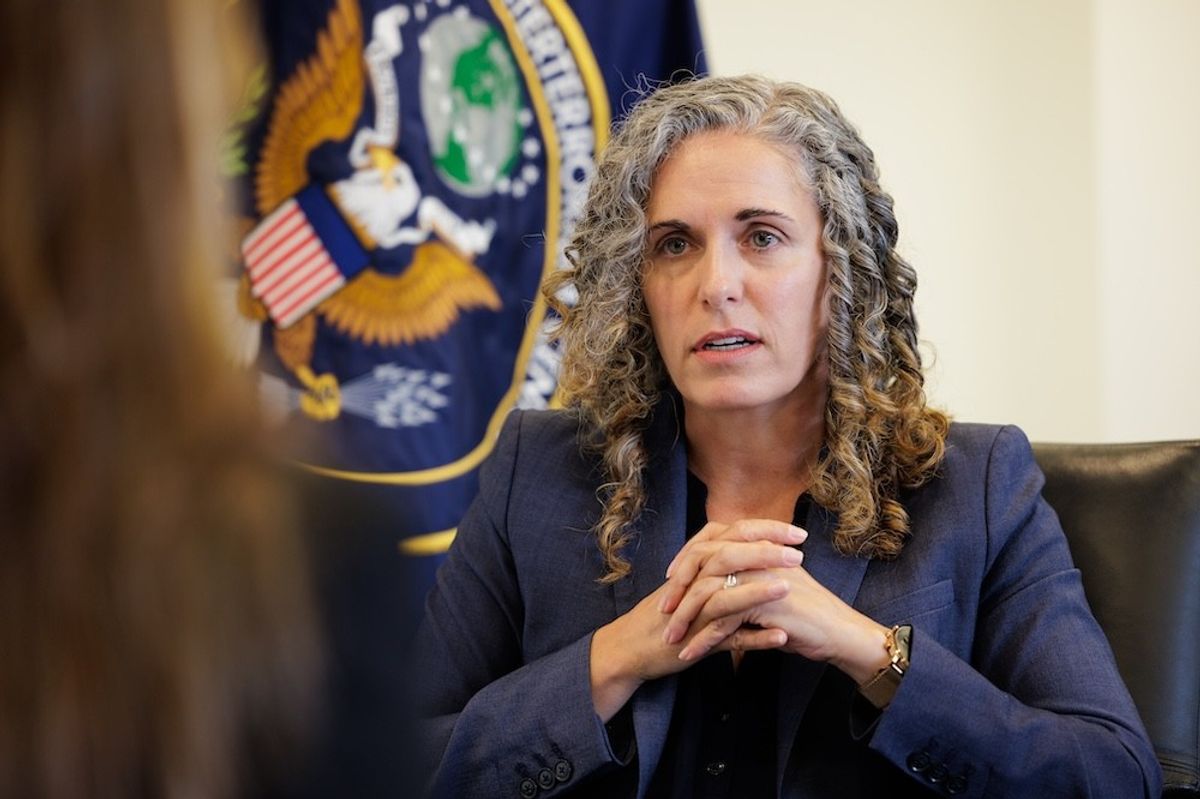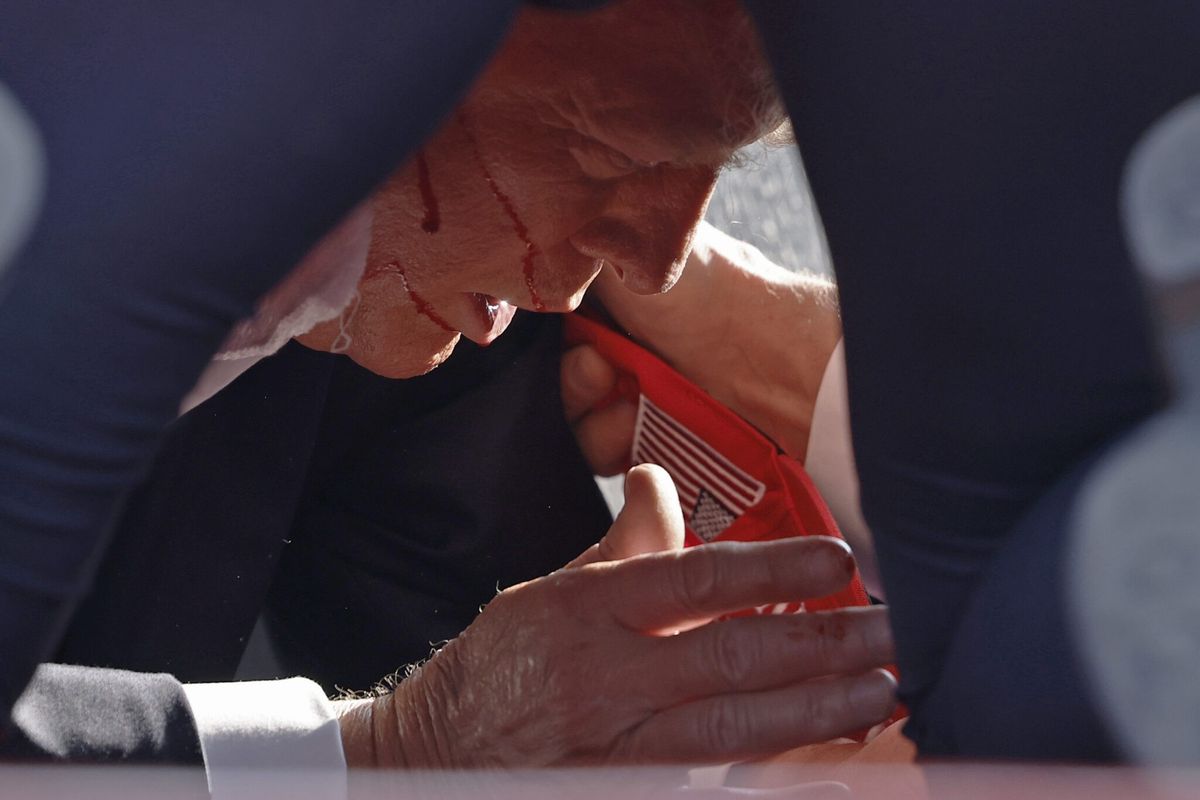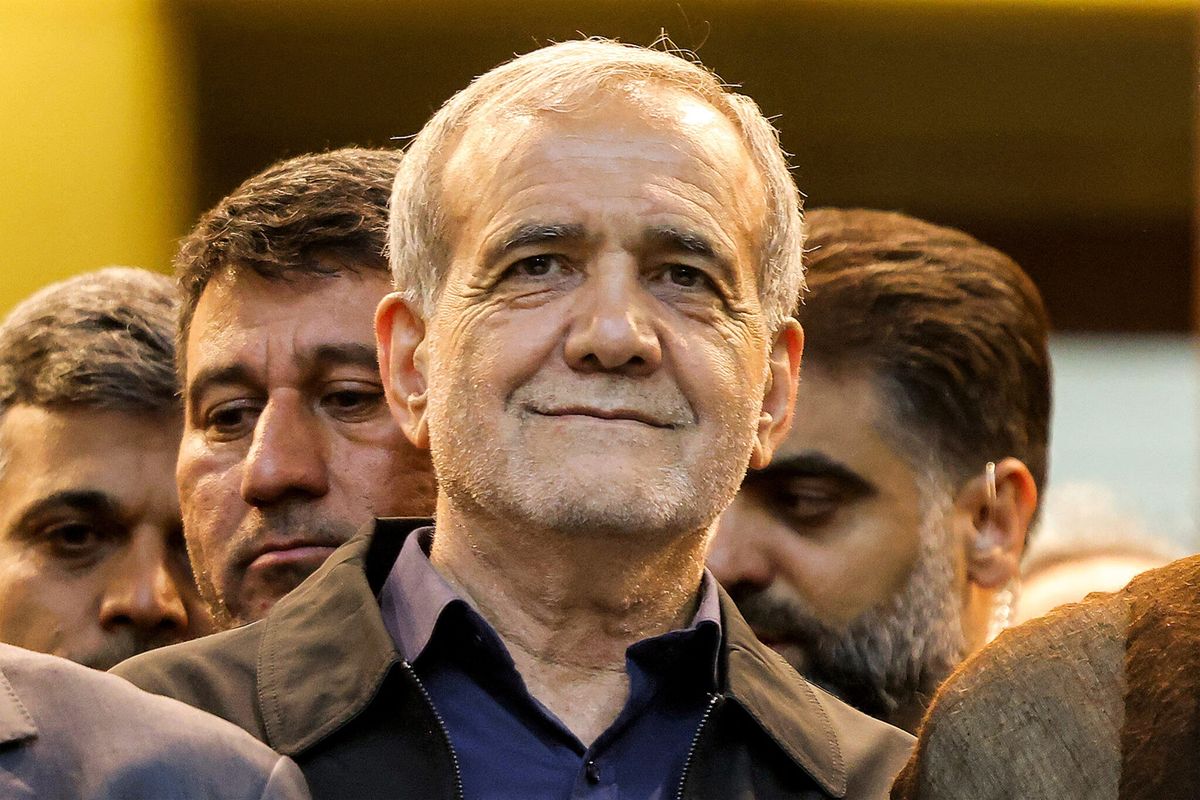EXPERT PERSPECTIVE / OPINION — We’ve seen all this before, the U.S. mission in Syria is not mission complete – it was not in 2018 – and it’s not done today. Syria remains an unfinished mosaic.
But a small U.S. presence in northeast Syria remains a strategic hedge against a resurgent ISIS and the center of gravity for maintaining much-needed pressure on a temporarily weakened Iran.
The Golan Heights is an apt metaphor for the transformation of the terrorism threat over the course of the last 8 years. U.S. policymakers will benefit from reconsidering Syria from atop the Golan plateau in the southwest corner of Syria to the plains below, as far as the eyes can see. From those heights looking downward – and considering Israel’s military campaign in Gaza, Lebanon, and against Iran throughout the broader region – Syria should remain a U.S. counterterrorism priority against jihadists and a field of rival competition among powers, great and emerging.
Hayat Tahrir al-Sham (HTS) – a former Al Qaeda affiliate – Turkey, ISIS, competing Islamists, Syrian opposition groups, and Kurds, are all scrambling for greater influence in Syria. Until Assad fled Damascus, Russia sought greater influence there, while Iran dreamed of regional hegemony that now seems to be slipping away quicker than the mullahs in Tehran can react.
On the other hand, the United States and its Kurdish partners – the Syrian Democratic Forces (SDF) – work together in Syria to keep the pressure on ISIS. In this competition – only now coming into sharper focus – the unintentional consequence of Hamas terrorism on October 7, is that Iran and its proxies are among the losers. But the biggest losers in this competition are Russia and Moscow’s erstwhile Syrian allies: they both lost the first Great Power campaign in the Middle East. Assad’s regime is now gone, and as a result, the Kremlin will struggle to project power from the region, moving military assets from coastal Syria to Haftar’s Libyan redoubt.
Because of Israel’s muscular response to Hamas and Hezbollah, the ‘axis of resistance’ threat is significantly degraded and won’t recover easily. But the Middle East contest is far from settled because variegated extremist actors will inevitably compete to fill a power vacuum in Syria. So, Islamist terrorists will remain a potent threat if the equilibrium is thrown off balance in Damascus.
It’s too soon to be overly optimistic.
Just a few weeks into 2025, problems from Gaza to Iran, and much of the future of the Middle East will rest in the hands of a second Trump administration. Counterterrorism work during the first Trump administration turned shrinking the ISIS ‘physical caliphate’ and killing Abu Bakr al-Baghdadi, into a signature policy achievement.
This time around, however, a new administration will face an even more complex threat landscape. As the horrific New Year’s Day terrorist attack in New Orleans demonstrates, ISIS still retains the ability to inspire attacks through its propaganda, pushing its supporters and followers to wreak havoc, including in Western countries. The attacker pledged allegiance to ISIS in a video, but according to his brother, “he was upset about what’s happening in Palestine.”
The Cipher Brief brings expert-level context to national and global security stories. It’s never been more important to understand what’s happening in the world. Upgrade your access by becoming a subscriber.
As terrorism expert Brian Jenkins rightly observed in 2024, “the Israel-Hamas war has upended the terrorist threat matrix.” Now with the overnight collapse of Assad’s brutal regime, and with Islamists overrunning Damascus, the complexities of counterterrorism policy, coupled with broader Middle East policy objectives, will be immensely more complicated in Syria — and across the region. The terrorist threat landscape looks much different for 2025 than it did back in 2017, when Trump first took office.
It’s worth providing some sense of the scope of the counterterrorism problems that the Trump Administration faced in 2017, in order to contextualize where we are today in terms of the terrorism threats. Counterterrorism priorities defined the early days and months of a new Trump administration in 2017 — not by choice, but by circumstance.
The Trump Administration had four terrorist-related problems on Inauguration Day 2017 that it was dealing with: a palpable threat stream directed at commercial aviation. Secondly, a pressing counterterrorism operation directed at al-Qa’ida’s affiliate in Yemen, AQAP. Thirdly, it was an imperative to accelerate and get the “Defeat ISIS” campaign right. Fourth, and not least, there were American hostages held by terrorists from the Middle East to South Asia.
From a counterterrorism standpoint, then, what will be different for a new administration in 2025?
So far, there’s no publicly known threats to commercial aviation from terrorists. But Western security officials believe that incendiary devices, shipped via an air transport company were part of a stepped-up Russian sabotage plot that aimed to start fires aboard cargo or passenger aircraft flying to the U.S. To be sure, then, that’s a terrorism problem that could escalate catastrophically. Secondly, there are still U.S. hostages being held by Hamas in Gaza, and finding Austin Tice in Syria must remain a focus of U.S. intelligence and diplomatic outreach. In short, Syria must be the highest U.S. counterterrorism priority: jihadists cannot fill any power vacuums in an already volatile Middle East.
We’ve both been to Israel and across the Arab world to see and study counterterrorism challenges. So, we can also agree that time spent at the Golan Heights can help contextualize the current Israel–Hamas, and post-Assad Syria developments through a much broader geo-strategic lens. From those heights, Syria represents competition and conflict that goes well beyond U.S.-led counterterrorism campaigning against the Islamic State. It’s part of a low-level war — and competition — that’s been underway for decades. Now, it’s a field of competition that harkens back to the First Word War.
Let’s consider that history and its relevance today.
First, the ISIS campaign of violence played out in a disrupted Middle East landscape reminiscent of the political geography during the First World War. Then, fragmented tribes united under the banner of Abd-al Wahhab, when the Ikhwan movement—a violent formation of tribesmen fanatically committed to Wahhabism, an austere version of fundamentalist Islam—arrived on the scene to fill a vacuum left after the Ottoman caliphate collapsed, and a civil war erupted in the Arabian Peninsula that lasted until the 1930s. Seeing that historical backdrop, some observers labeled ISIS a “neo-Ikhwan vanguard.”
Second, there is, yet again, a serious governance and legitimacy vacuum in Syria that serves as the Middle East’s setting for HTS and other variegated Islamists to compete and consider their next moves in post-Assad Damascus.
Third, as a result of an aggressive 10-year counterterrorism campaign waged against ISIS across three U.S. administrations, aspiring jihadists may still be biding their time underground. What’s more, even though ISIS can no longer credibly point to the group’s territorial control of a self-declared caliphate, the New Orleans attack showed once again the group’s capacity for destruction far beyond the borders of the Middle East.
And yet, there are even more immediate questions to consider, for example, can jihadists recast their past ideological underpinnings for a more nationalist approach to governance? And perhaps most urgently, what does all this mean long-term for U.S. policymakers in terms of Iran and counterterrorism? Will Ahmed al-Sharaa, who heads Hayʼat Tahrir al-Sham, honor his pledge to American diplomats that he would not allow terrorist groups there to threaten the West? If he has the political will, does he also have the capability? These questions are unanswerable for the time being.
Are you Subscribed to The Cipher Brief’s Digital Channel on YouTube? Watch The Cipher Brief’s interview with CIA Director Bill Burns as he talks about The Middle East, Russia, China and the thing that keeps him up at night.
Still, conventional policy wisdom suggests that in chaos, there is opportunity. That may be good for the United States and Israel, but worryingly, it may also be good for jihadists, too.
The region’s volatility does provide real opportunity for ISIS to again cause Syria and its neighbors to erupt into further violence. After all, ISIS has directed its past violence against rival Sunni Islamist fighters, Iraqi Shi’ite militias and Hezbollah, and, of course, American-trained Kurdish fighters—who are avowed enemies of Turkey. More threateningly, there are already rumblings that Turkey is poised to conduct a military offensive against the Kurdish-led Syrian Democratic Forces. And no one can be sure what assorted militia groups and the unwilling conscripts who formed the remnants of the once-menacing Syrian Army will do going forward.
Meanwhile, Israel is still contending with Hamas, a restive Palestinian population in the West Bank, a tenuous ceasefire with Hezbollah, and Iranian proxies like the Houthis are testing the limits of Israeli patience.
Israeli military operations in Syria went from a publicly acknowledged low-level “campaign between the war” against Iranian targets to overtly and aggressively destroying remnants of Syria’s military equipment – and chemical weapons – that could potentially fall into jihadi hands. Israel also moved into the Syrian side of a 50-year-old demilitarized buffer zone to increase its security, realizing that its forces would face little to no resistance.
Though weakened, ISIS remains a movement that views the world in apocalyptic terms. The last holdouts commanding the group are confident in ultimate victory, either by defeating forces arrayed against them or—far more likely—as ISIS’s members rally to become martyrs in a chaotic and violent Syria. ISIS will regard any setbacks as merely temporary—affiliates, branches and cells will carry on the fight. That means the challenge posed by ISIS will persist, given the group’s own view of its continuing struggle and given its lingering foothold in a region replete with governance and legitimacy challenges. There are growing concerns that ISIS could set its sights on detention centers and prisons in northeastern Syria—as the group did during its initial ‘Breaking the Walls’ campaign and again three years ago this very month, in al-Hasakah.
Ironically, policy critics in 2018 from outside the Trump administration opined that 9/11 had disproportionally “warped U.S. foreign policy,” concluding that it would take years to correct.
In some ways, October 7 validates how strategically risky pivoting away from the Middle East and undoing steady counterterrorism investments can be. Significant investments of blood and treasure can be swept away like the region’s shifting sands.
Everyone needs a good nightcap. Ours happens to come in the form of a M-F newsletter that provides the best way to unwind while staying up to speed on national security. (And this Nightcap promises no hangover or weight gain.) Sign up today.
To be fair, both the Trump and Biden administrations wanted to focus more on great-power competition. As a consequence, in the last few years the U.S. overcorrected its counterterrorism policy attention in the Middle East, while the pendulum swung from a laser-like focus on non-state actors to a fixation on nation-states, chief among them Russia and China. And while the U.S. was realigning its foreign policy focus to counter Moscow and Beijing’s influence, respectively, the Iranians seized plenty of political space to fill the vacuum but instead waged a failed and highly counterproductive war with their proxies, losing Syria along the way.
Although much remains to be seen, since Hamas terrorism has triggered a dramatic and far-reaching rebalancing of power in the Middle East, the Trump administration should endeavor to see the region through a strategic competition lens that begins at the Heights of Golan – across Syria — and ranges eastward to Iran, and to the Ukraine, where Russia is challenging the Western rules-based order. This is what great power competition looks like. And like it or not, terrorism — and counterterrorism policy — will be central to the yet-to-be written narrative for the next four years.
Read more expert-driven national security insights, perspective and analysis in The Cipher Brief because National Security is Everyone’s Business.





